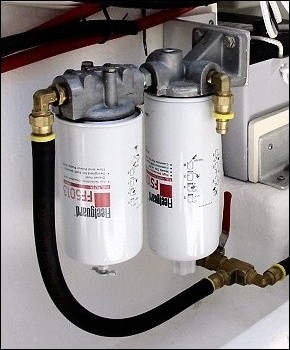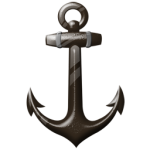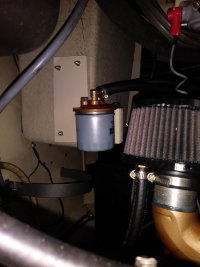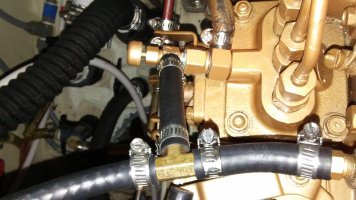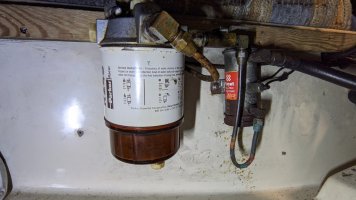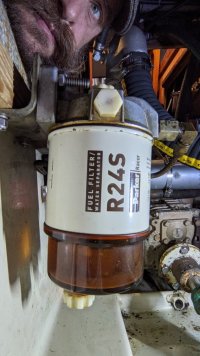Sailingfun
Member III
With my lazy jack project almost on track, I switch my attention to the diesel engine.
My appointment for bottom paint is close so I need to reattach the new tank (fairly easy) and reinforce the diesel filter system.
Until now, "tototo" has a single racor 500 fg with a 2-micron filter unit. I opened today the unit and the element is absolutely and totally nasty. Time to do something better.
From a past project, I have 2 other racor 500 units so I was thinking escalate 10 micro/5 micro/2 micros.
But Ohh god from the Olympus! Racor does not produce a 5 micro-unit.
So back to the square one. I can install a napa commercial unit with the spinner and water separator (if I find a cheap cap unit) or tried to find 5 micro-unit that fit the racor 500.
But I remember I have a reloc cap for filter.. maybe I'm lucky and it's the same size as the napa filter
My appointment for bottom paint is close so I need to reattach the new tank (fairly easy) and reinforce the diesel filter system.
Until now, "tototo" has a single racor 500 fg with a 2-micron filter unit. I opened today the unit and the element is absolutely and totally nasty. Time to do something better.
From a past project, I have 2 other racor 500 units so I was thinking escalate 10 micro/5 micro/2 micros.
But Ohh god from the Olympus! Racor does not produce a 5 micro-unit.
So back to the square one. I can install a napa commercial unit with the spinner and water separator (if I find a cheap cap unit) or tried to find 5 micro-unit that fit the racor 500.
But I remember I have a reloc cap for filter.. maybe I'm lucky and it's the same size as the napa filter

